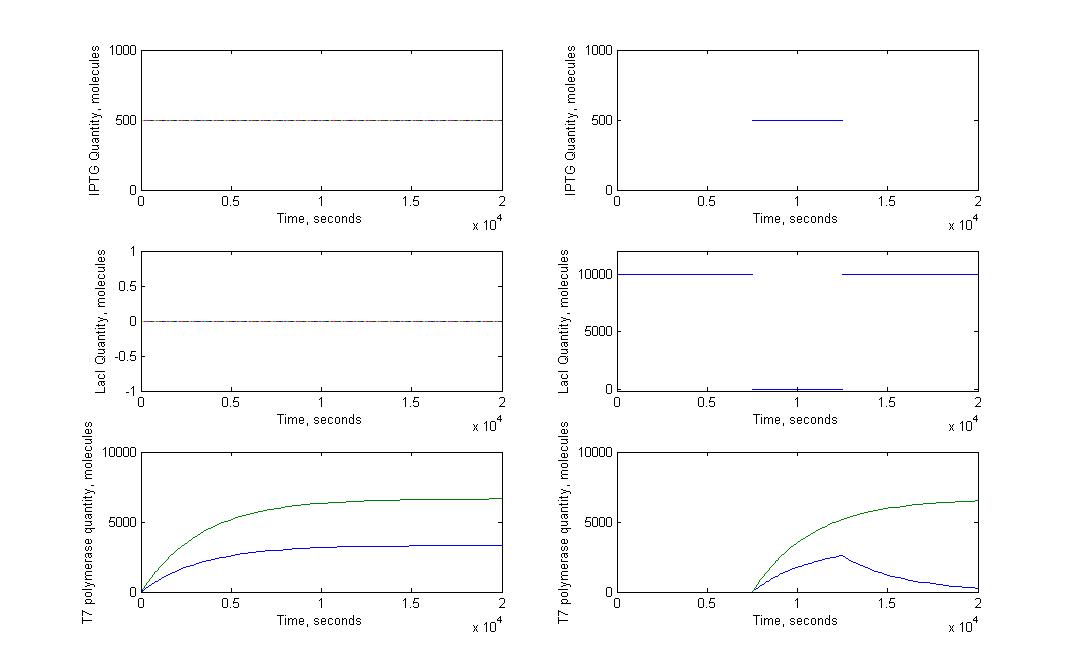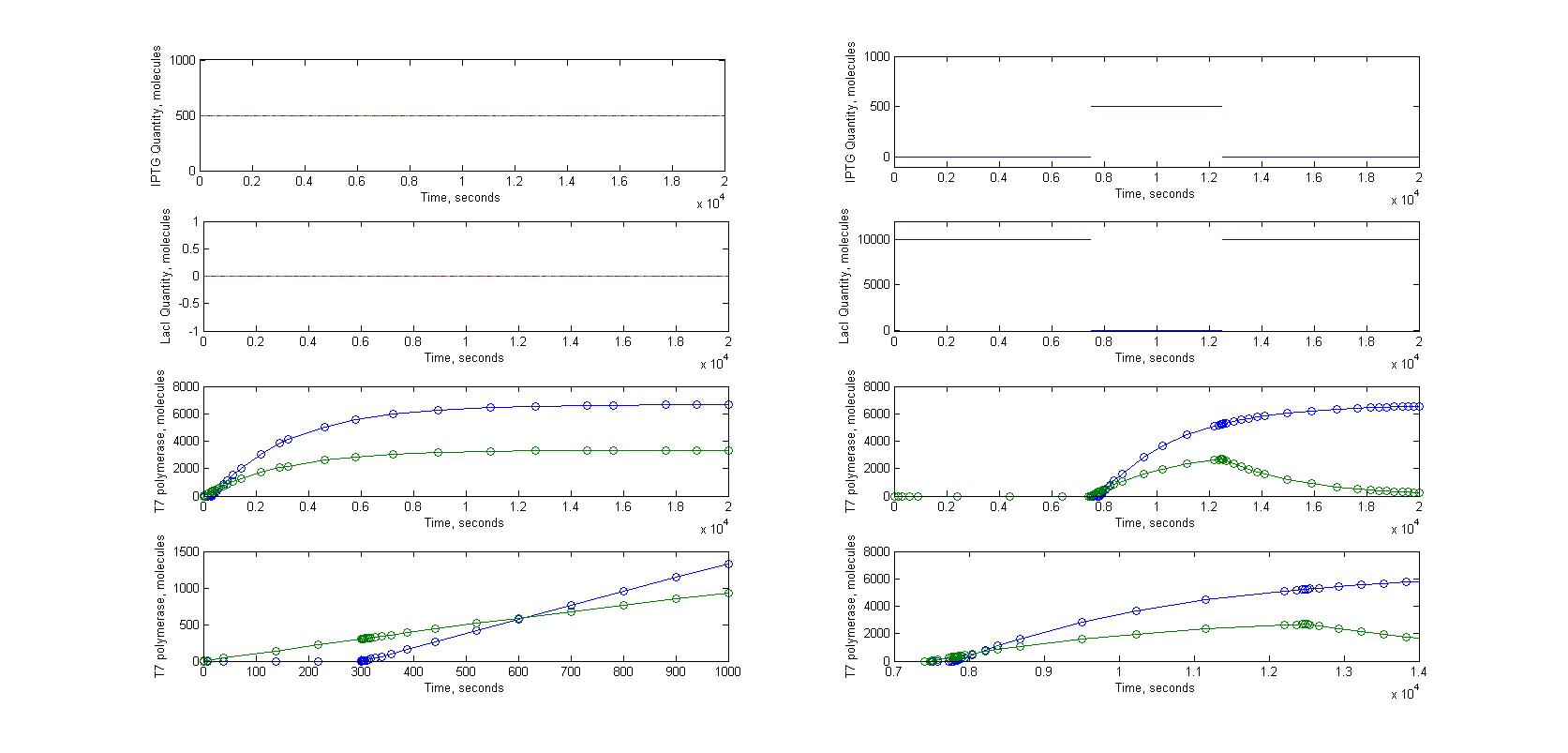Team:Paris Bettencourt/Modeling/T7 diffusion
From 2011.igem.org
(→Model for T7 diffusion) |
(→Design) |
||
| Line 12: | Line 12: | ||
This construction was put in two different settings. One is what we just described, where the emitting gene network is in one cell and the receiving gene network is in another. In the other construction, everything is in one cell. We use the second construct as a control to really see the impact of the cell-to-cell communication on the behaviour of the cells.<br> | This construction was put in two different settings. One is what we just described, where the emitting gene network is in one cell and the receiving gene network is in another. In the other construction, everything is in one cell. We use the second construct as a control to really see the impact of the cell-to-cell communication on the behaviour of the cells.<br> | ||
| - | We ran our models for those two configurations. We used a steady flow of signaling molecules in the receiver cell for the "one emitting cell - one receiving cell" construction. You can find our justifications about this assumption <html><a href='https://2011.igem.org | + | We ran our models for those two configurations. We used a steady flow of signaling molecules in the receiver cell for the "one emitting cell - one receiving cell" construction. You can find our justifications about this assumption <html><a href='https://2011.igem.org/Team:Paris_Bettencourt/Modeling#Steady_state_flow_from_the_nanotubes'>here</a></html>. <br> |
== Parameters == | == Parameters == | ||
Revision as of 17:33, 4 August 2011

Contents |
Model for T7 diffusion
Design
The T7 diffusion design is our first original construct. In this design, the T7 RNA polymerase acts both as the signal transmited and as the amplifier (auto-amplification). T7 RNA polymerase is produced in the emitter cell, then diffuses through the nanotubes and arrives in the receiver cell. In this cell, the T7 RNA polymerase activates on a pT7 promoter. Behind this promoter, we put a gene coding for the same T7 RNA polymerase (amplifier) and for GFP (reporter).
This construction was put in two different settings. One is what we just described, where the emitting gene network is in one cell and the receiving gene network is in another. In the other construction, everything is in one cell. We use the second construct as a control to really see the impact of the cell-to-cell communication on the behaviour of the cells.
We ran our models for those two configurations. We used a steady flow of signaling molecules in the receiver cell for the "one emitting cell - one receiving cell" construction. You can find our justifications about this assumption here.
 "
"



